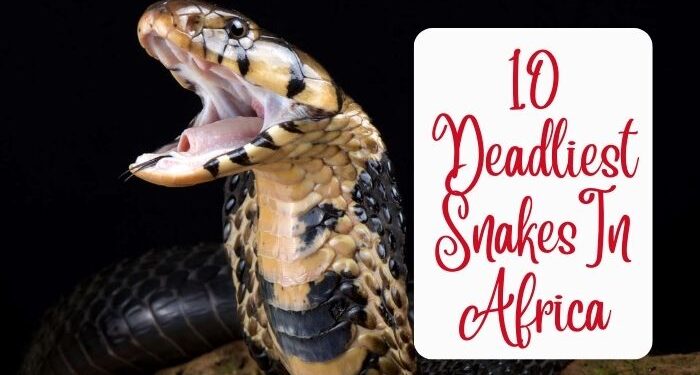Across the world, Africa is known for its diverse ecosystems and varied landscape but that’s not all. The land also harbors some of the deadliest snakes that command an aura of both fear and respect. From the notorious Black Mamba known for its potent venom and lightning-fast strikes to the Puff Adder who may be patiently blending into the sand before unleashing a powerful bite, these snakes are indeed some of the deadliest beauties in Africa.
In exploring these silent ambusers, we uncover their unique characteristics, hunting strategies, and the effects of their venom.
10 Most Deadliest Snakes In Africa
1. Black Mamba (Dendroaspis Polylepis)
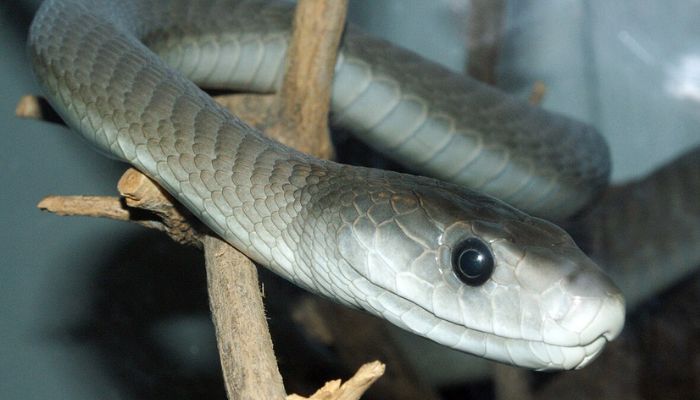
With an average of 4.3 meters in length and a lightning-fast speed of 12 miles per hour, the black mamba is living up to its fearsome reputation as one of Africa’s deadliest snakes.
This sleek, agile hunter is extremely aggressive and will strike at any chance it gets. Its neurotoxic venom delivers a potent cocktail of toxins that can instantly cause paralysis and respiratory failure within minutes. Even though they have been described as shy by nature when threatened, their dramatic threat display shouldn’t fool you.
Rather than fighting, the black mamba prefers flight over fight, escaping into burrows and termite mounds with remarkable agility.
2. West African Carpet Viper (Echis ocellatus)
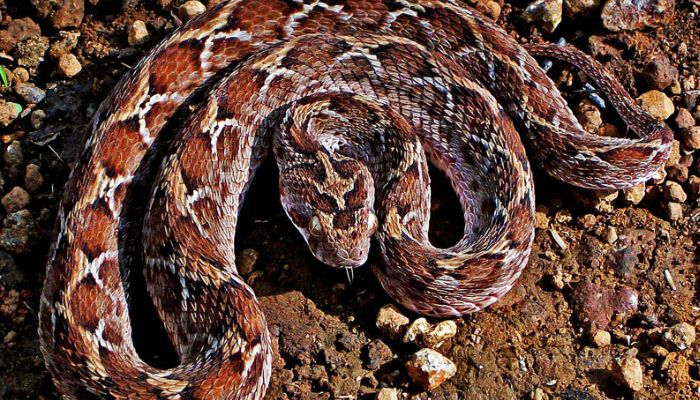
Even though this West African carpet viper is small (0.6-1 meter) in size, it shouldn’t be underestimated. It is mostly found in the sands of West Africa and is responsible for some of the highest numbers of snake bites. By nature, they are yellowish-brown in color, and have distinctive eye-like spots they are thick, heavy-bodied, and have a viper diamond-shaped head.
Its potent hemotoxic venom disrupts blood clotting, leading to internal bleeding and potentially kidney failure. When trying to attack, this snake can easily camouflage against the desert background ambush unsuspecting prey, and strike multiple times.
While this viper is crucial in controlling rodent populations, its bite always demands immediate medical attention.
3. Gaboon Viper (Bitis gabonica)
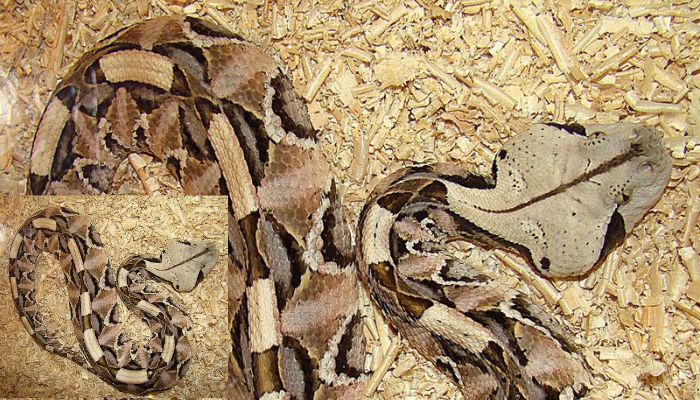
Often found in rainforests and savannas, this stocky, heavy-bodied serpent is Africa’s largest viper, reaching a staggering 5 centimeters in length and 18 kg in weight. Unsurprisingly, its thick-set body houses venom glands capable of delivering the largest single dose of venom among vipers.
Its venom is a complex mix of cytotoxins and neurotoxins which can cause tissue damage, bleeding, and paralysis. Despite its intimidating size, the Gaboon Viper is primarily an ambush predator that would patiently wait for prey to wander near before attack.
4. Mozambique Spitting Cobra (Naja mossambica)
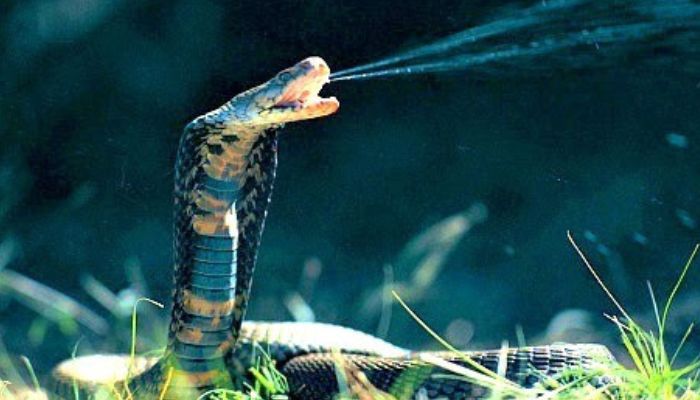
This cobra is found across diverse habitats in Southern Africa and possesses a unique defense mechanism: spitting venom. It is usually pink or yellow-purple appears nervous in temperament can accurately project its potent neurotoxic venom up to 3 meters, and often aims for the eyes of a perceived threat. This venom can cause temporary or even permanent blindness if not flushed immediately.
Aside from spitting into the threat’s eyes, this cobra will quickly unleash a bite of strong cytotoxic venom which causes pain, swelling, and tissue damage. If not
Primarily feeding on rodents and amphibians, this cobra also plays a role in controlling populations of scorpions and centipedes.
Read Also: Most Dangerous Tribe in Africa
5. Egyptian Cobra (Naja haje)
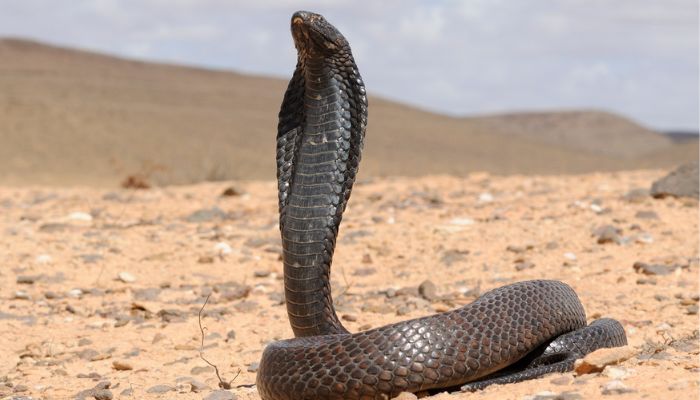
For centuries, this cobra has captivated imaginations for its flared hood which is instantly recognizable. It is found across North and sub-Saharan Africa and it reaches up to 2.5 meters in length. Its color varies from copper-red to almost entirely black.
Since they are often docile, they take an upright posture and spread their cobra hood as the final warning before striking. This is possibly why they are depicted in ancient Egyptian art, it was revered as a symbol of royalty and power.
With each bite, it releases a potent neurotoxic venom which directly attacks the immune system and causes the body to slowly shut down. it is also capable of causing paralysis and respiratory failure. Surprisingly, it does not spit venom like other African cobra.
6. Cape Cobra (Naja nivea)
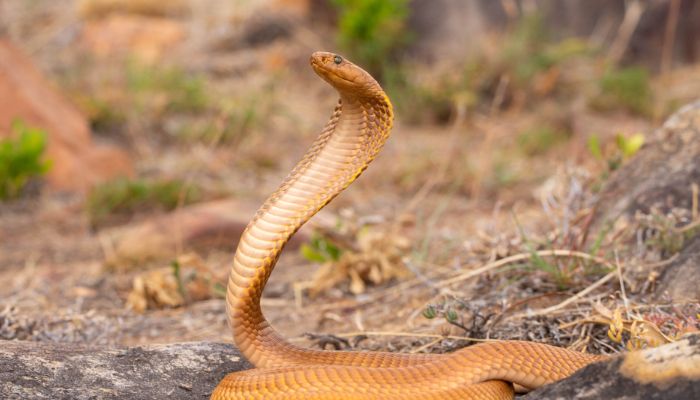
Found in diverse habitats across southern Africa, this cobra reaches up to 1.5 meters long and is known for its diurnal activity. It varies in color and ranges from yellow to copper/mahogany colored and purplish/black.
Even though it is not as aggressive as the black mamba, its potent venom cannot be argued. Death usually occurs between 2 and 5 hours after the bite and its neurotoxic venom affects the nervous system, leading to paralysis and respiratory failure. While primarily feeding on rodents and frogs, it will readily defend itself if threatened and raise its hood before giving out potentially fatal bite.
While not as aggressive as the black mamba, its presence demands respect due to its potent venom.
7. Saw-Scaled Viper (Echis carinatus)
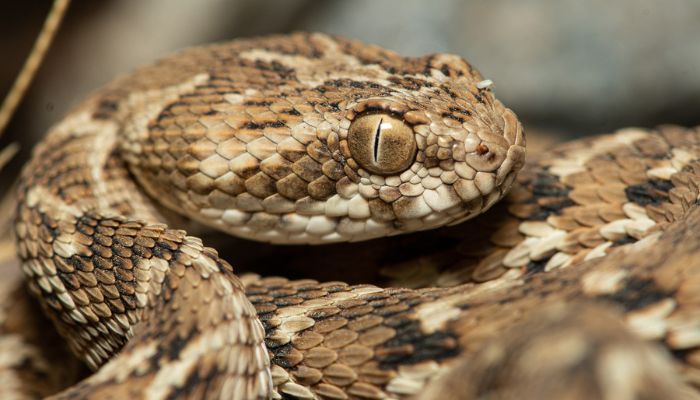
Don’t be deceived by the small size of this viper which often measures between 0.4-0.8 meters as it is one of the most aggressive and ill-tempered snakes in the world. According to studies, its bite is five times more toxic than that of the cobra and 16 times more toxic than Russell’s viper (one of Asia’s most deadly snakes).
Its venom is hemotoxic and very virulent and its bite can be fatal without prompt medical attention. It disrupts blood clotting, causing internal bleeding and organ damage. It is often classified as a member of the “Big Four,” and this refers to a group of snakes responsible for more bites and even death than any other species on the planet.
8. Forest Cobra (Naja melanoleuca)
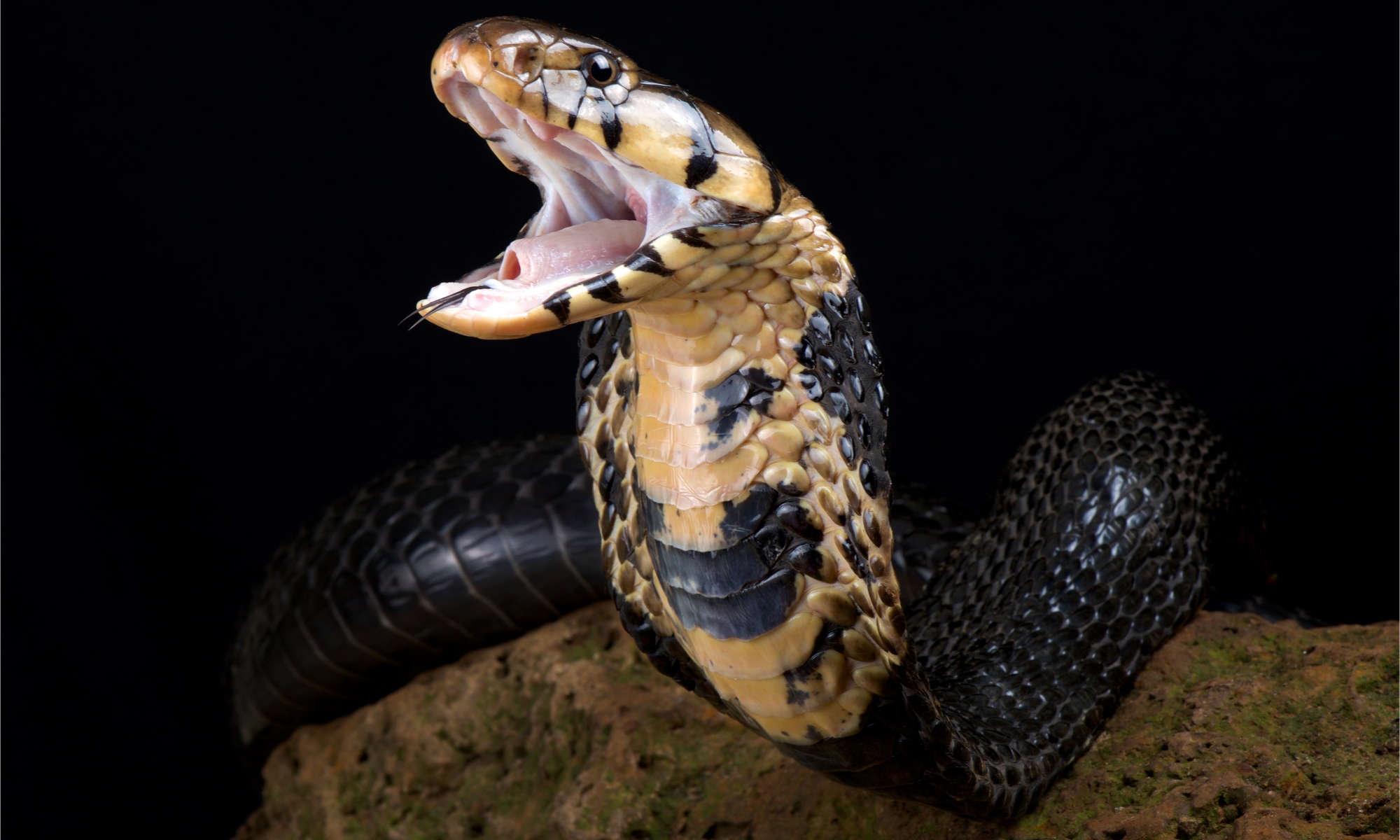
This slender, agile cobra mostly inhabits the rainforests of West and Central Africa. It can reach up to 3 meters in length and can be easily identified by its large hood, wide body, and unique color which appears glossy-black with a whitish-brown and sometimes yellow.
This cobra possesses a blend of neurotoxic and cytotoxic venom and can affect both the nervous system and tissues. They are mostly active at night and feed on rodents, amphibians, and other snakes. Even though it is not as aggressive as some other cobras, its potent venom speaks for itself.
In about 30 minutes after a bite, the victim will experience symptoms such as fatigue, vertigo, hypotension, hearing loss, an inability to speak, and even shock. If no medical treatment is given immediately, this may result to even death from suffocation.
9. Puff Adder (Bitis arietans)
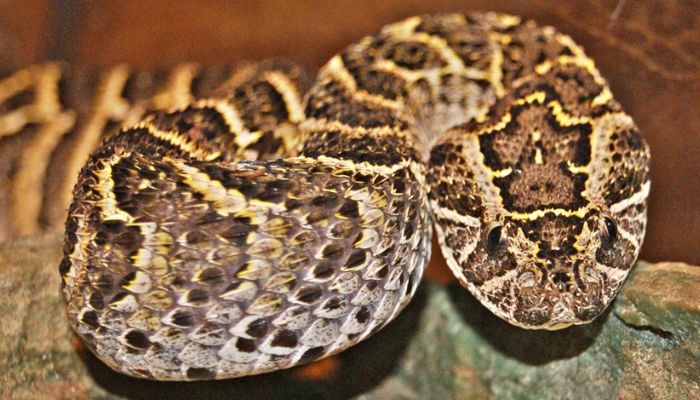
This large (up to 1.9 meters) and heavy-bodied viper is mostly known for its camouflaging and defensive behavior. They are mostly found in savannas and grasslands across sub-Saharan Africa. While their venom may not be as deadly as the Black Mamba, their bites aren’t so rare. In fact, the Puff Adder has been linked to several fatal snake bites in Africa each year as its nature brings it into frequent contact with humans. With its cytotoxic venom, it causes extensive tissue damage and necrosis, sometimes requiring limb amputation.
When threatened, it puffs up its body and hisses loudly but sometimes may not move when it hears a predator approaching. Rather, it blends quickly with the sand, and when people accidentally step on it, and strikes in self-defense.
10. Green Mamba (Dendroaspis angusticeps)
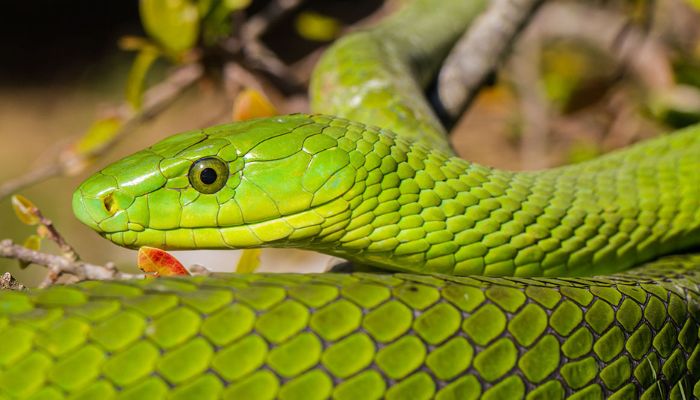
This arboreal beauty exists in three species (Eastern, Western, and Jameson’s Green Mamba) native to Africa and they are found in coastal and rainforest regions. They possess a potent neurotoxic venom that affects breathing and muscle control, however, their toxicity differs. Symptoms after being bitten can manifest within 15 minutes and their victims may suffer pain, swelling, shock, nausea, dizziness, and headaches.
Similar to their cousin – the Black Mamba, they possess unmatched agility, speed (reaching 20 km/h!), and unpredictable behavior making them a force to be reckoned with. But due to their shy nature, bites from Green Mambas are relatively rare.










